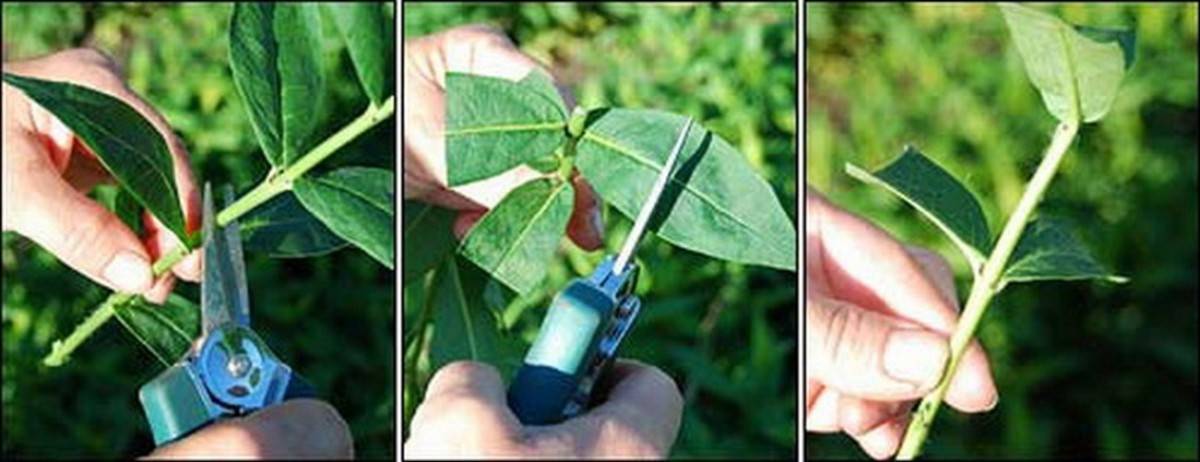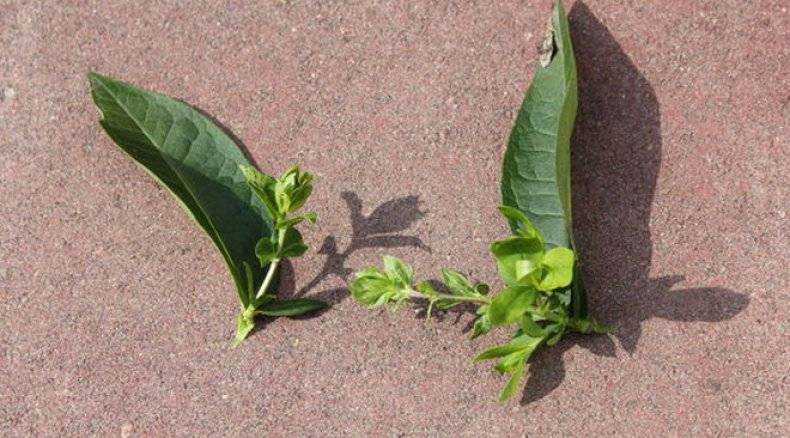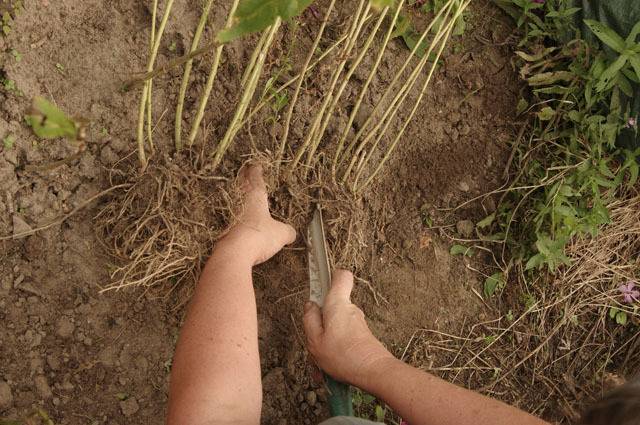Cutting phlox in summer: reproduction
Content:
A phlox bush is able to decorate a garden plot for a long time. To plant greenery on the local area, a large amount of planting material will be required. You can quickly fill the empty space using vegetative propagation of flowers. Further information on how to propagate phlox in the garden.
Benefits of vegetative propagation
The easiest way to reproduce perennial phlox in the country is by seeds. But it has a significant drawback: with seed breeding, varietal characteristics may not be transferred.
Vegetative reproduction has the following advantages:
- when grafting, a lot of planting material is not required;
- if the bushes die due to root rot, the variety can be preserved by rooting stem fragments;
- phlox can be propagated from spring to late autumn.
And armed with the knowledge of how phlox can be propagated, the gardener will fill the flower bed with this beautiful crop.
Propagation by leaf cuttings
The breeding procedure with this method at home is performed as follows:
- Before phlox cuttings, cut off the leaves with a small piece of the stem.
- The planting material is planted at a slope in a box with loose, fertile soil to a depth of 2 centimeters.
- From above, mulch with sand or vermiculite with a layer of 1-1.5 centimeters.
To create a microclimate conducive to the early germination of leaf cuttings, the boxes are covered with foil.
Propagation by stem cuttings
Before growing phlox from cuttings, preparatory measures are carried out.
For reproduction, choose healthy stems, which are cut in such a way that each segment consists of 3 internodes. To prevent moisture evaporation, the lower leaves are removed completely, the upper ones are shortened. For planting by the seedling method, a box with a height of 10 centimeters is chosen. It is disinfected with a solution of potassium permanganate, dried.
Reproduction of phlox by cuttings in summer and spring is performed as follows:
- the box is filled with a loose substrate with a layer of 6-7 centimeters;
- every 5 centimeters, recesses are made into which stem cuttings are inserted;
- the substrate is slightly moistened, crushed.
The landing box is placed in a shaded place. As the soil dries, the cuttings are watered with warm water. Rooting will take place in 3-4 weeks. At the same time, young shoots will begin to grow from the nodes.
Propagation by root cuttings
This method is usually used when it is necessary to preserve a plant affected by stem nematodes. To do this, the bush is dug, fleshy roots are selected, which are cut into fragments of 5-6 centimeters. The roots are planted in boxes, covered with sand.
In autumn cuttings, the boxes are brought into a cold room, the plantings are stored in these conditions until spring. Periodically, the substrate is sprayed with water, not allowing it to dry out.In the spring, a box with root cuttings, covered with dark material, is brought into a warm room. When the shoots begin to sprout, the shelter is removed.
When phlox multiplies in spring, cuttings are planted in boxes, which are covered and placed in a room with a temperature of 10-15 ° C. After 2 weeks, the containers are transferred to a warmer room, the shelter is removed. Root cuttings are hardened, in May they are planted in the garden.
Terms of cuttings and further care
Phlox is propagated vegetatively from spring to autumn. Each method has its most favorable time of the year for the procedure. From spring to autumn, the plants are constantly looked after: they water, feed, loosen the soil, weed weeds. To make the bushes lush, pinch the tops of the plants over 4-5 pairs of leaves. The inflorescences that begin to dry are cut off.
Propagation by spring cuttings
In May, phloxes can be propagated in several ways: by growth shoots, stem and root cuttings, by dividing the bush.
If the shoots are cut before budding, the survival rate will be higher: in late spring and early summer, the plant is most active and rooting is easier.
Reproduction of phlox by summer cuttings
Before propagating phlox by cuttings in the summer, you need to carefully select the source material. The selected shoots must be green and healthy. At the end of June and at the beginning of July, you can propagate the flower with leaf and stem cuttings, layering.
Reproduction of phlox by autumn cuttings
In September, they begin to reproduce phlox with stem cuttings. They are planted at an angle of 45 °.
For the winter, plantings are covered with mulch, consisting of sawdust, peat, needles. In September or early October, bushes are planted, propagated by layering. At the same time, overgrown plants can be divided and planted.
Dividing the bush
When the planting grows, it can be divided into several parts.
Reproduction of phlox by dividing the bush is performed as follows:
- The plant is dug up, shaken off the ground.
- Divide the bush by hand into parts.
- Delenki are immediately transplanted to a permanent place.
Every split bush must have at least one shoot and root system. The gardener can not dig out the whole bush, but only half, which he can divide into parts and plant on the site. The resulting void is sprinkled with fertile soil, lightly tamped.
Reproduction by growth shoots
The procedure is carried out in early spring, without waiting for the regrowth of the cuttings.
To do this, the shoots are carefully broken out together with the "heel", planted for rooting in the greenhouse. They are periodically watered, loosened up the ground, and weeds are removed.
At the end of spring, roots appear on the cuttings, after which they are transplanted to a previously prepared permanent place.
Reproduction of phlox by layering
Tall varieties can be rooted and spread on the site by layering.
The procedure is performed at the beginning of summer as follows:
- The foliage is removed from the shoots selected for reproduction.
- They make grooves 7-8 centimeters deep, watered.
- The stems are laid in them, pinned.
- Cover with earth.
Throughout the summer, the layers are looked after: they water, loosen the soil, remove weeds. In the fall, roots and small shoots will appear on the stems. Young plants are separated from the mother plant and planted on the site.
Phlox are decorative flowering, fragrant plants that are easy to care for. They can be easily diluted on site with a variety of methods. Armed with the knowledge of how phlox reproduce, and by choosing one or more options, the gardener can plant beautiful plants in the area for a short time, and admire their flowering all summer long.




















